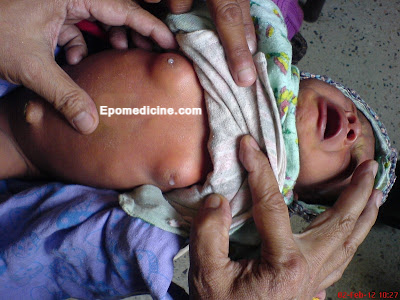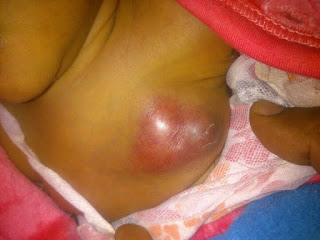Scenario
Concerned parents appear in the Out patient Department, with a newborn who has bilateral breast engorged and obviously secreting milk. Parents had tried to squeeze the milk out but instead the breast got further engorged.
Few months before a neonate was admitted for Intravenous antibiotics for similar problem, after parents tried to squeeze out the milk, it led to formation of an abscess that needed incision and drainage.
What is Witch’s milk?
Medical Dictionaries have defined Witch’s milk as “Milk resembling colostrum sometimes secreted from the breasts of newborns of either sex three to four days after birth and lasting no longer than two weeks, due to endocrine stimulation from the mother before birth.”
The term “witch’s milk” comes from ancient folklore that milk from a newborn’s nipple was a source of nourishment for witches.
Why Does it occur?
Galactorrhea is the result of the influence of the mother’s hormones on the baby before delivery. It is caused by a combination of the effects of maternal hormones before birth, prolactin and growth hormone passed through breast feeding and the postnatal pituitary and thyroid hormone surge in the infant. Blood from the nipples is nearly always benign and associated with the normal growth of the ducts, rather than mastitis. In extremely rare cases mastitis may develop. Removing the milk from the breasts can prolong milk production and is customary in some cultures but considered harmful by medical professionals.
Witch’s milk is more likely to be secreted by infants born at full term, than by prematurely born infants.
While breastfeeding may also contribute to prolonged milk production and breast enlargement, temporary or permanent weaning is not recommended.
Incidence
5% of newborns and can persist for two months though palpable breast buds can persist into childhood. Infants with galactorrhea have significantly larger breast nodules than infants without galactorrhea.
Remedy
- No treatment necessary unless the area becomes red or tender
- Avoid massage or manipulation of the breast tissue
- Reassurance
Complications
- Mastitis when squeezed
- Breast Abscess
- Mastitis neonatarum




